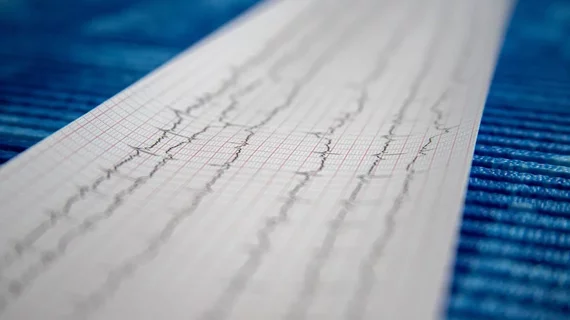An alternative to pacemakers? Ablation method treats sinus bradycardia
A new approach to treating symptomatic sinus bradycardia (SB) led to increased heart rate and improved quality of life in a single-center study of 62 patients, particularly those under the age of 50.
Ablation of the atrial ganglionated plexus (GP) was associated with an increase of 19.3 beats per minute in patients under 50, and that effect was consistent through one year of follow-up. Participants over the age of 50 averaged a sinus rhythm (SR) increase of 10.8 beats per minute but it wasn’t sustained over time.
The researchers from Shanghai Chest Hospital, who published their findings in JACC: Clinical Electrophysiology, said the method could be an alternative to a pacemaker. Younger patients with those devices, the authors pointed out, often require multiple generator changes and replacements, exposing them to infection.
“Atrial GP ablation not only improved clinical outcomes and quality, but also avoided multiple pacemaker replacements and unnecessary nonphysiological pacing,” wrote lead researcher Mu Qin, MD, and colleagues. “Atrial GP ablation may therefore serve as an alternative treatment of patients less than 50 years of age with symptomatic SB but lacking profound sinus node dysfunction. However, patient selection for atrial GP ablation is crucial.”
The study included 40 participants younger than 50 and 22 who were older. They underwent Holter monitoring to measure heart rate activity before the procedure, one week after ablation and three, six and 12 months post-procedure. A survey was completed at baseline and one year after ablation to measure patients’ quality of life based on the following areas: physical functioning, role limitations due to physical health, bodily pain, general health, vitality, social functioning, role limitations due to emotional problems and mental health.
The study group showed significant improvements in all these areas, but the older patients, when analyzed separately, only showed obvious improvements in three categories.
The researchers also found ablation of the right anterior GP and the GP at the junction of the aorta and superior vena cava, in particular, were associated with the most significant increases in SR. They said the right anterior GP “may serve as a ‘gateway’ for the cardiac autonomic nervous system to modulate the sinus node.”
In an accompanying editorial, Douglas P. Zipes, MD, with the Indiana University School of Medicine, pointed out “altering the patient’s own body to improve his or her health without implanting devices or leaving surgical footprints is a great achievement and, as long as the manipulation has no negative consequences, a preferred treatment approach.”
However, Zipes wondered if the disappearing effect of ablation in the older study group means the younger cohort would eventually lose the benefit as well. For this reason, he said, a longer-term, larger-scale trial is necessary.
“While this is a well-done and important study, it is of a small and very selective group of patients,” Zipes wrote. “As such, it should be considered a hypothesis-generating pilot study, and be followed by a larger, well-controlled, and randomized trial, as the authors recommend. Only this way can we establish whether GP ablation deserves a proper place in treatment selection for patients with symptomatic sinus bradycardia.”

